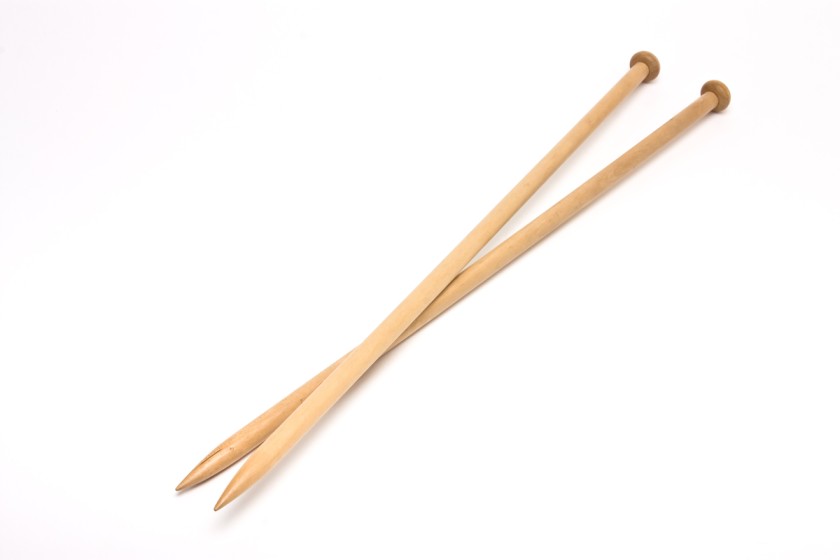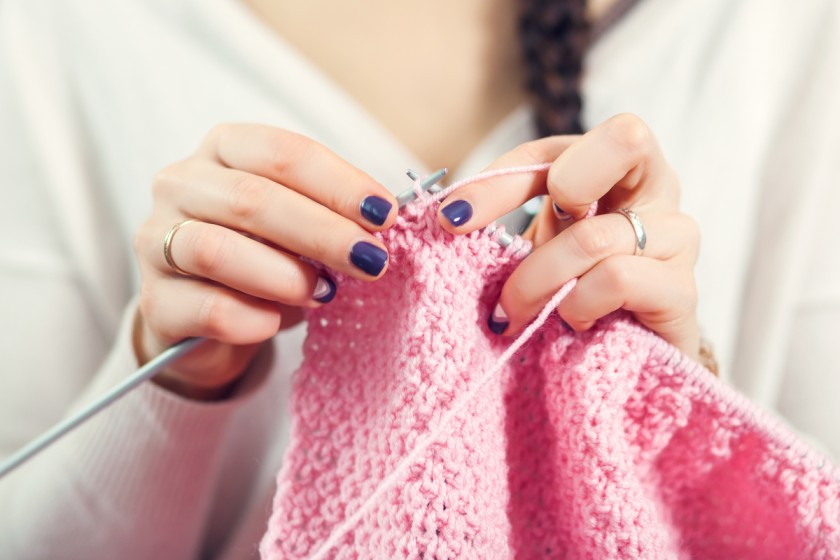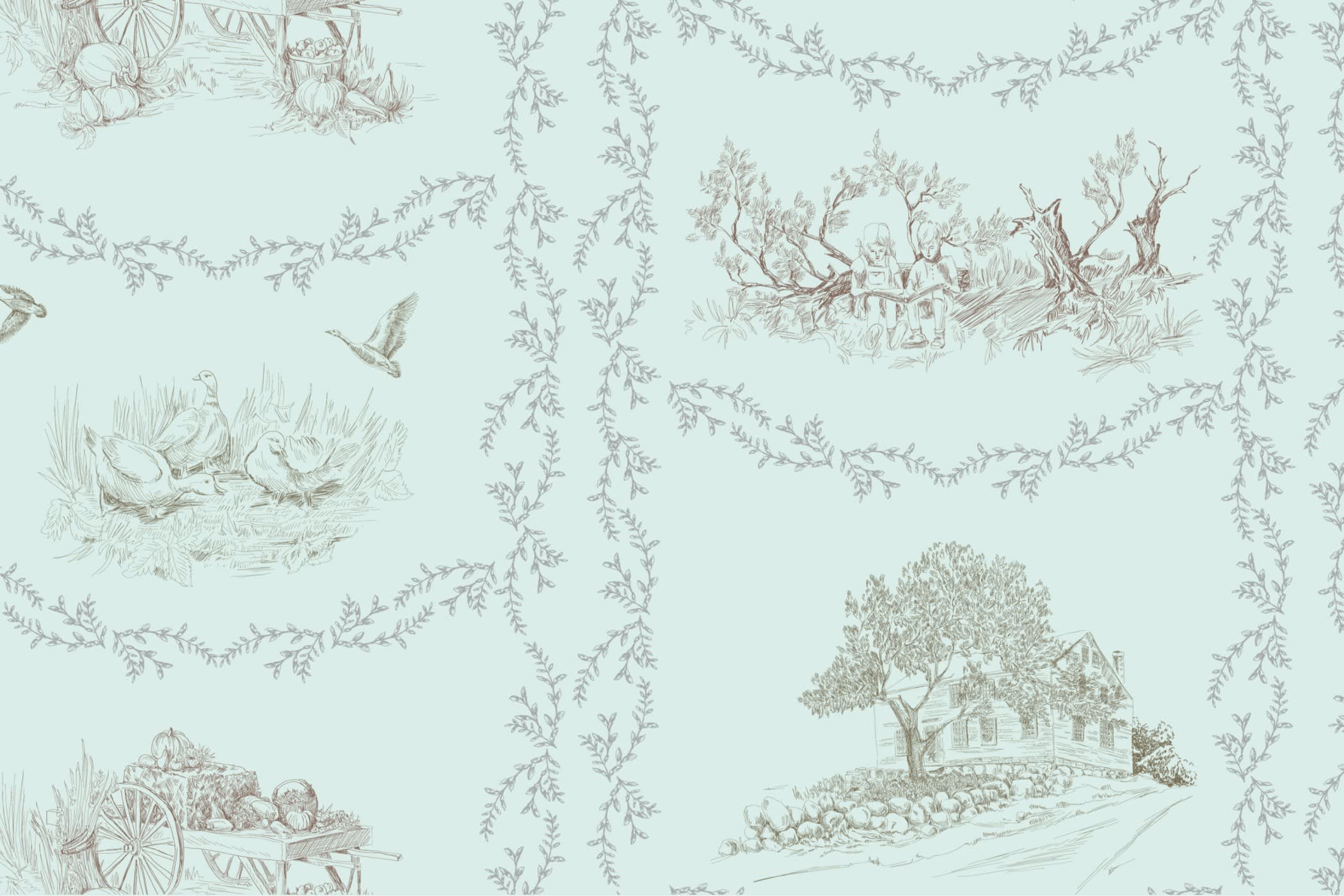Knitting for Beginners: Know the Tools



Generally, knitting is transforming fibre into a fabric made of interconnected circles. However, it's far beyond that. Knitting is material for imaginative articulation. It helps you make everything from a weighty bed cover to a slender sweatshirt of twelve tones. It lets you create something altogether novel, something not available in any store. It keeps you occupied and engaged and helps you unwind. Assuming you've only recently begun to learn knitting and are still learning the ropes, there are a couple of things we tell you that will make your foray into knitting easy and effortless.
The Basics And Everything About Knitting
Knitting needles
We get that picking the right knitting needle can be a daunting task for a novice knitter. There are three fundamental sorts. Most are wood, metal or plastic. They generally come in various sizes, and a higher size number indicates a thicker needle.
Straight
Straight needles come two by two. They have a point toward one side and a stop on the other. They are used to knit level pieces.
Twofold pointed
Twofold pointed needles come in sets of four, five, or six. They have a point at the two closures and are used to knit tube-shaped articles, similar to socks or sleeves, consistently.
Round
Round needles have two hints associated with a long, slight link. Some are 'fixed,' which implies the links are permanently connected to the tips. Some are "interchangeable," meaning the links can be changed among the various tips.
Knitting Needle Size Chart

| Metric (mm) | US Size | UK Size | Crochet |
| 2.0 mm | 0 | 14 | – |
| 2.25 mm | 1 | 13 | B |
| 2.5 mm | 1.5 | – | – |
| 2.75 mm | 2 | 12 | C |
| 3.0 mm | 2.5 | 11 | – |
| 3.25 mm | 3 | 10 | D |
| 3.5 mm | 4 | – | E |
| 3.75 mm | 5 | 9 | F |
| 4.0 mm | 6 | 8 | G |
| 4.5 mm | 7 | 7 | – |
| 5.0 mm | 8 | 6 | H |
| 5.5 mm | 9 | 5 | I |
| 6.0 mm | 10 | 4 | J |
| 6.5 mm | 10.5 | 3 | K |
| 7.0 mm | – | 2 | – |
| 7.5 mm | – | 1 | – |
| 8.0 mm | 11 | 0 | L |
| 9.0 mm | 13 | 00 | – |
| 10.0 mm | 15 | 000 | – |
| 12-12.75 mm | 17 | – | – |
| 15-16 mm | 19 | – | – |
| 19.0 mm | 35 | – | – |
| 20.0 mm | 36 | – | – |
| 25 mm | 50 | – | – |
Yarn
The main thing you'll have to get while you're beginning is the arrangement of yarn loads. Yarn can be exceptionally fine or heavy, and picking the right weight for your venture is vital to a decent result. The same goes for fibre types. Fleece, cotton and acrylic are the three most well-known ones and have different properties and look and feel when sewn up.
Counting your Rows
Line markers slip over or around your needles to stamp your place, so you don’t lose your mark. They're especially useful in complicated patterns.
English versus continental knitting
English and mainland are the two popular knitting styles for both amateurs and experienced. Assuming you're knitting English, you'll hold the functioning yarn in your right hand, folding it over the needle in a way known as "tossing." If you're knitting mainland, you'll hold the functioning yarn in your left hand and "pick" the fastens with the right-hand needle. Both of these methods have ardent fans, so our recommendation is to check both out. One might feel more natural to you than the other. You might even need to become adept at both.
Step-by-step instructions to start knitting

The technique for getting the primary column of fastens onto the needle is casting on. Expert tip: "Cast" remains unchanged in both the present and past tenses. One of the widely recognized casts a knitter learns is the long-tail cast. Most people quickly pick this and employ it for most of their knitting projects. However, there are various cast-on techniques and plenty of resources to teach these techniques. Most seasoned knitters use multiple methods for different purposes. Some cast ones are stretchy, for instance.
Following a Pattern
The most effective way to figure out how to follow an example is to observe something basic, bounce right in and learn as you go. At the outset, the sample shows the materials you will need: how much yarn, needle size, and any other design elements like buttons etc. The measure is the number of lines and columns there ought to be per inch in your weave texture.
When you're into the example, knitting is simply an issue of understanding the shortened forms. Something like "s1,k1, PSSO" may seem small currently, yet it'll be pretty much as simple as "See Spot Run."
Step-by-step instructions to finish
Casting off, or restricting off, is something contrary to casting on. It's the most common way of getting the weaved work off the needle with a completed edge. The essential cast off is to sew the initial two fastens, then, at that point, disregard the first the second, leaving one join on the needle. You continue to do this byline until everything except the last line has been pushed off. Then, at that point, you cut your yarn and get the tail through the last fasten.
Like with casting on, there are various casting off strategies. Assuming you need a cast-off edge with a specific look or conduct, you can investigate a portion of different choices.
Investigating
While knitting botches are common, it’s not difficult to fix them. The most terrible thing that can happen when you get something wrong is that you will need to detach the work and begin once again (knitters are a funny bunch, they call this frogging).
The most common challenges are:
Managing openings in your knitting
Fixing a dropped stitch
You will also need to be aware of the direction of knitting so you can place the lines back on your needle accurately if (and when) they fall off.
Practicality of knitting
Variations
You want to learn only a small bunch of things to sew. All the other types is a minor departure from one of them:
- Casting on - placing the yarn on the needles.
- Restricting off - taking the wool off the needles without disentangling the knitting.
- Sew line - knitting.
- Purl fasten - purling (or knitting in reverse).
- Expanding - making the texture bigger.
- Diminishing - making the fabric more modest.
Knitting versus crocheting
Simply put, knitting is making a texture with ties. Knitting is crocheting with more or equivalent texture types.
Be agreeable
Many individuals will tell you that you should hold the yarn a specific way. I say pooh on that. Hold the wool anyway you want for the yarn to feel great in your grasp AND to keep the correct pressure, which is more important than how you are holding the wool.
Everything is discretionary
There are many knitters out there who are sure that wool is the main texture to sew. We call them yarn-nazis. We trust in the right yarn for the right project. If it is hot where you live or if you are hypersensitive to fleece, just do not use it! If you're knitting a child sweater, be mindful that you may need to hand-wash it every time there is an unsightly spill. Do not limit your fibre choices; there are plenty of options including cotton, hemp, bamboo, cloth, silk or a blend of these.
Knit something helpful
Assuming that you will weave, sew something you will utilise. There isn't anything more troubled than knitting something and afterward watching it sit in your home, unused and disliked. Sew something helpful, gift to loved ones, or provide for a noble purpose (like caps for preemie infants or covers for Syrian camps).
Good for the mind
Knitting permits our cerebrum to drift and fly. It lets the imaginative piece of your mind out to develop, make and find. It additionally reduces pressure. Avid knitters will tell you that knitting keeps them sane. There is a typical saying - 'I sew so I don't kill.' Did you have any idea that after WWI, officers determined to have PTSD were given knitting treatment?
It's not ideal for everybody
Knitting isn't everybody’s cup of tea. Some think that it is exhausting and tedious, even. That is okay, we understand.
A few facts about knitting
- Knitting was at first a male-just occupation. Truth be told, when the absolute first knitting association started in Paris in 1527, no ladies were permitted.
- The world's quickest knitter is Miriam Tegels of the Netherlands. She can hand weave 118 stitches in one moment.
- Linda Benne has been the North American speed-knitting champ for ten years. She can sew 253 stitches quickly.
- The record for the vast majority of knitting happened in September 2012 in Royal Albert Hall, London. Here 3,083 individuals weaved together for 15 minutes.
- Knitting started in the Middle East and entered Europe with the Crusades. Knitting began in the Arab world and then spread with the Crusades into Spain. The expression "to weave" wasn't added to English until the 1400s.
- David Babcock entered the Guinness World Record when he completed the Kansas City long-distance race in 5 hours 48 minutes 27 seconds-all while knitting a scarf estimating 12 feet, 1¾ inches long. He overshadowed the past Guinness World Record, held by Britain's Susie Hewer. To be qualified, contenders should finish the long-distance race in under six hours.
Conclusion
As we discussed in the article, knitting is material for imaginative articulation. It is an oddly satisfying experience that allows you to create with your fingers. Make sure you follow a consistent pattern for knitting and remember, practice is what makes you perfect!
Are you a clothing brand owner? Connect with Fashinza today, and we can help you manufacture your unique designs and vision by connecting you to the best suppliers in the country. We assist in the entire production process from design to delivery!



















